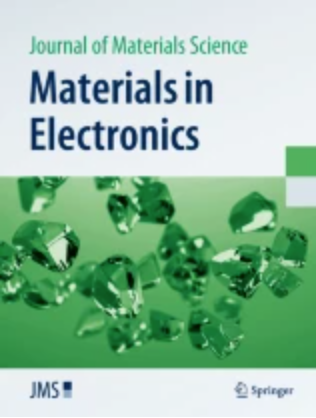Growth and characterization of semi-organic third-order nonlinear optical (NLO) succinic acid magnesium sulphate single crystals
Abstract
An effective growth method utilizing a slow evaporation process at room temperature has been implemented to produce the centrosymmetric semi-organic crystal of succinic acid magnesium sulphate (SAMS). The single crystal X-ray diffraction analysis indicates that the SAMS crystal exhibits a monoclinic crystal structure, with cell dimensions of a = 5.18 Å, b = 8.88 Å, c = 5.60 Å. The powder x-ray diffraction analysis indicates that the grown crystals possesses excellent crystallinity. The findings indicated a negligible level of absorption within the UV–Visible spectrum, with a lower cutoff wavelength identified at 245 nm. Furthermore, the optical band gap energy was determined to be Eg = 5.06 eV and optical transmittance spectrum demonstrated. An examination was conducted to determine the vibrational frequencies of the crystal through FT-IR spectral studies. The dielectric investigations of the crystal sample in its original state reveal a diminished dielectric constant and loss when subjected to higher frequencies. The fluorescence spectral study has been conducted to analyse the luminescence behaviour of SAMS. The analysis conducted via (SEM) provides valuable information regarding the quality of the sample and the distribution of grains on its surface. Additionally, the chemical composition of the SAMS crystal was assessed through energy-dispersive X-ray analysis. The crystal's bulk resistance and dc conductivity were determined using a Nyquist plot. The mechanical stability of the crystal was assessed using Vickers microhardness tests. The laser damage threshold (LDT) for the SAMS crystal was measured with an Nd: YAG laser functioning at a wavelength of 1064 nm. The Z-scan method, which employs an Nd: YAG laser, has been utilized to investigate third order nonlinear (SAMS). This technique demonstrates its potential for future applications in fields such as optoelectronics and optical limiting application.

 求助内容:
求助内容: 应助结果提醒方式:
应助结果提醒方式:


